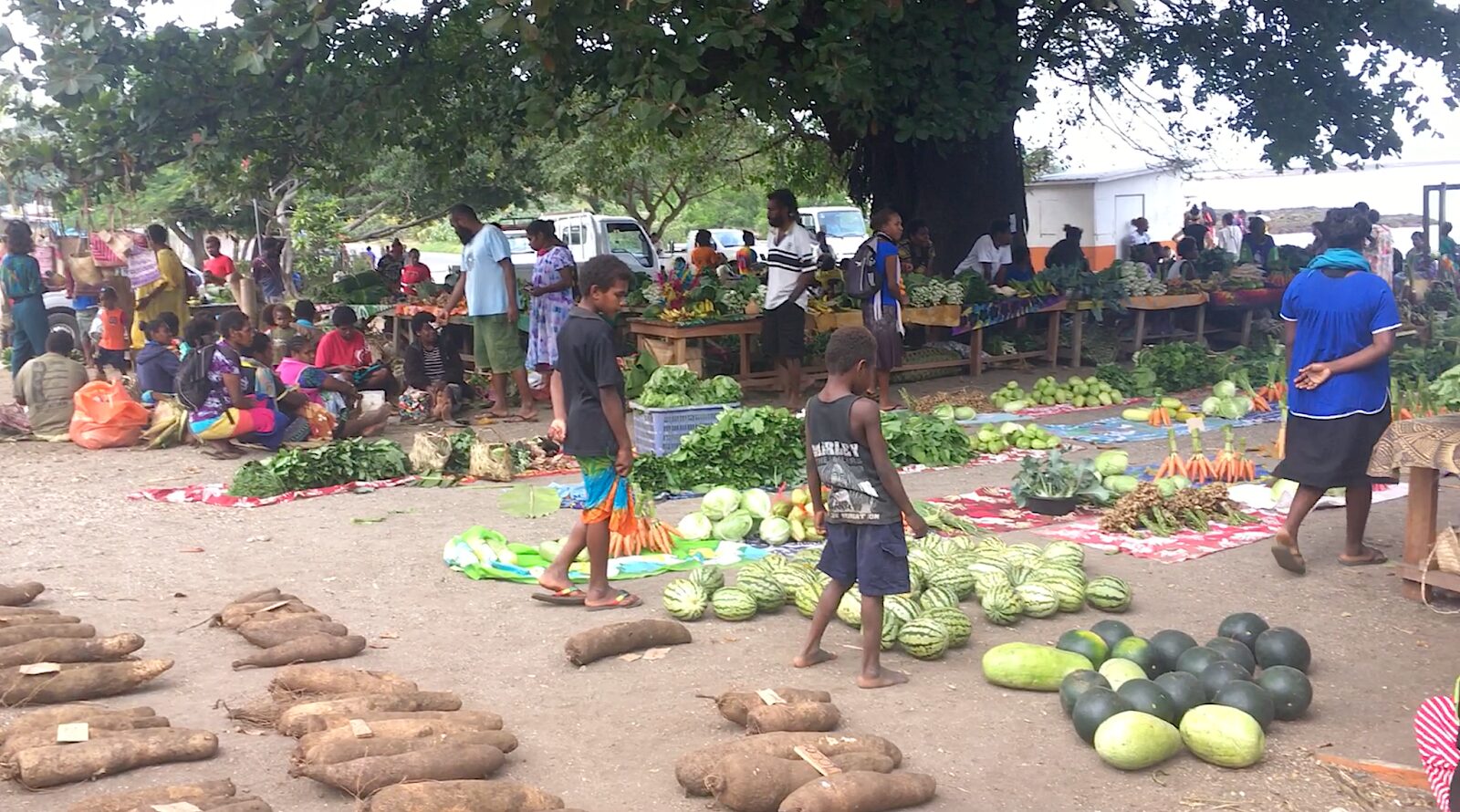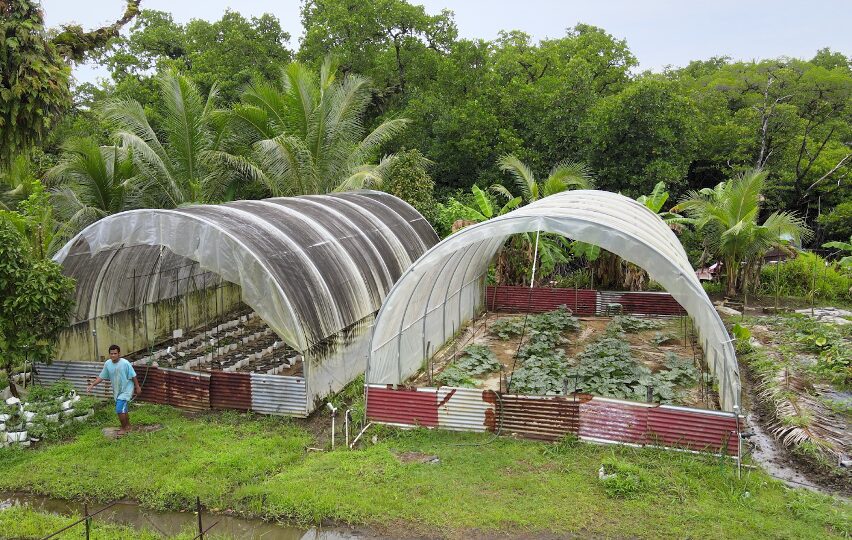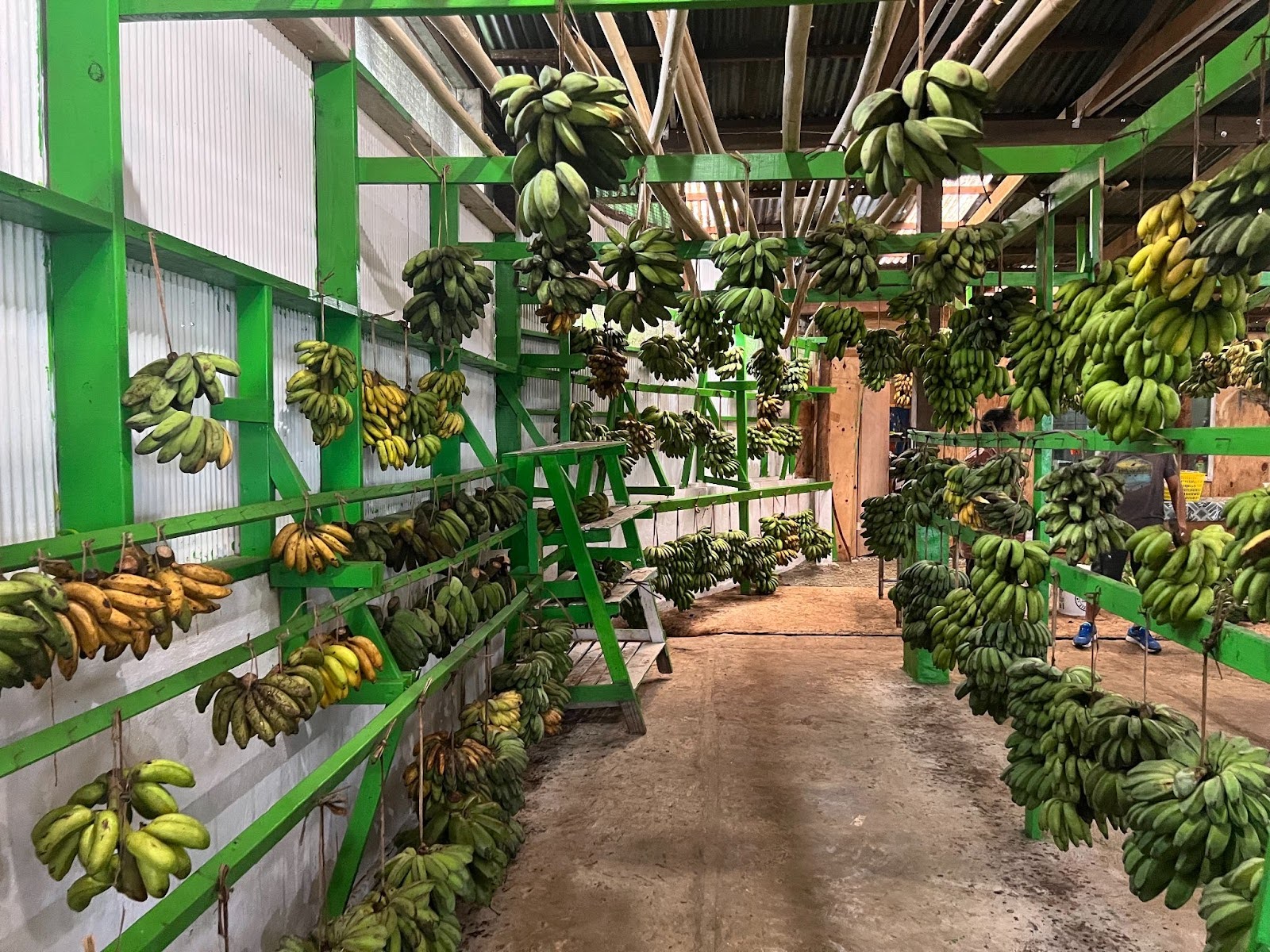
Courtesy of Micah Seidel

Courtesy of Micah Seidel
“Watch out!” shouted Rex Morgan Jr. from the top of the tree. I quickly looked up at him, sitting on the bent tree trunk a good 20 feet up, and jumped back so he could drop a large coconut that then bounced on the ground right where I had been standing. Morgan Jr. was the son of the family I was staying with, and had been showing me around the island of Tanna in Vanuatu, Melanesia. He climbed down, sliced the coconut open against a stump with a machete and peeled the meat out of the inside.
Before that day, the only coconut I had eaten was from the supermarket in my New Jersey hometown, probably shipped in from across the globe, and covered in powdered sugar. Though all the imported, processed food and plastic bags I was used to seemed wasteful and inefficient, I never felt like I could do anything about it and didn’t know what different food systems could look like. However, sitting there with Morgan Jr., this coconut was soft and not too sweet, and it was nice to be able to look directly above me and see exactly where it came from.

I visited Oceania for the first time when I was 13. At the time my mother was directing a nonprofit organization operating in the Pacific island country of Vanuatu, and during one summer she was able to bring me along during a work trip. While she worked, I spent a week living with a local farming family on the remote, volcanic island of Tanna.
Stepping off the plane in Tanna for the first time, and out of the single-room wooden airport, the color I saw more than any other was green. The rainforest covered every part of the island, and what was immediately remarkable was that the houses, farms and markets were not built against the forest or in giant man-made clearings. Multi-lane roads did not cut through the trees, and large buildings did not stand in empty lots where nature used to be.
The Morgan family grew all their own food and lived in houses they built from the plants and trees around them. The houses were small and not obstructive to the forest. Food crops were grown within the rainforest alongside other endemic plants. People lived and built and farmed with the ecosystem and inside it.

The Morgan family was large and included grandparents and great grandparents. Their days were spent tending to their pigs and chickens, and preparing foods like ‘laplap,’ a local dish made of ground breadfruit, bananas, taros, and other root vegetables. Whereas a home cooked meal in my house had at most some basil from our small garden in the backyard, this family could stand up and point to exactly where each of their foods came from.
The mother, Mariline Morgan, who introduced herself as my new “Tanna Mama,” was delightful and would prepare meals all from freshly caught fish or fresh eggs from her hens.
I didn’t see any supermarkets in Tanna, but instead a huge local market with people selling the crops they grew on-island and the fish they caught themselves. There were no plastic or paper bags, instead there were baskets made from woven leaves.


I was generously shown around the island throughout the week. On my last day in Tanna, I was sitting on the bench outside the grass bungalow, looking at the view of the rainforest and the mountains, when the father of the family, Rex, sat next to me and said, “When people come and stay with us here, it really is like they are part of our family.”
I wasn’t sure what to say. “Thank you,” I finally said, but it meant more to me than those words were able to express.
The second time I visited Oceania was as a Rutgers undergraduate student. I had the honor of accompanying Rutgers food systems scientists to Micronesia, when I was 17. We visited the islands of Kosrae and Pohnpei, in the Federated States of Micronesia.
Kosrae is a small island, and their local food system is not as intact as that of Tanna. Centuries of colonialism and disease brought by foreigners had a negative impact on the local community, which is now dependent on imported food. I had the privilege of meeting with a local family who has had a significant impact on restoring and rejuvenating local food production.
Robert and Nora Sigrah have brought more than 70 greenhouses to the island providing them for free to any farmer on Kosrae who needs them. As these islands are some of the wettest places on Earth, the greenhouses are vital for shielding crops from seasonal downpours. “For about six months it was raining between 20 and 30 inches a month,” said Nora Sigrah.
“Clearly the greenhouses are needed to protect the crops, not only from overwatering, but also from being damaged by torrential downpour,” she said.



In addition to providing free greenhouses, Robert Sigrah also promotes local farming by providing free cuttings of his green tangerine trees to anyone on the island who wants them. “Since we start propagating from branches, it would take only three to five years to start bearing fruits, as opposed to if we started from seeds,” said Robert Sigrah. Green tangerines are signature to the island of Kosrae. “If every household, every family has tangerines,” Sigrah said, “then everybody will be happy.”

On an island where practically everyone knows each other by name, it is not the work of the large organizations, but the actions of local individuals that make all the difference.
In Pohnpei, Micronesia, many people practice subsistence agroforestry in their main island’s tropical rainforest. They also raise their own pigs and chickens, but primarily for family consumption.
According to Mark Kostka, a local farmer of Pohnpei, traditional chief, and manager of the Green Climate Fund Food Security Project for Farming Families in The Federated States of Micronesia, those who live in the town of Kolonia are almost 100% dependent on imported food. The local food system is not developed enough for people harvesting in the forest to regularly sell their foods at a public market. Pohnpei State Senator Jason Walter said that the Pohnpei state government is eager to find the best ways to support sustainable, local food production so that their residents are not dependent on imported foods.
In Pohnpei, I met Manuj R. Nair, Ph.D., the director and chief scientist of Aquaculture Research at the College of Micronesia. Nair works hard to promote local food security by studying the viability of aquaculture, or ocean farming, in the island’s waters. Specifically, the farming of sea cucumbers.
I spent a day with Nair and his crew, helping them measure and weigh the growing sea cucumbers from their farm. The team of five local men dove into the water where the sea cucumbers were being grown and lifted the bags of cucumbers up from the bottom of their cages.


The process is surprisingly simple, involving only a few plastic pipes and some cages to protect them. Sea cucumbers are filter feeders, meaning they do not require additional feed, and simply filter out the algae, bacteria, etc., already present in the water and convert that into protein. This actually cleans the water while they grow. Sea cucumbers are eaten by some of the locals in Pohnpei and can also support the local economy through export to Chinese markets where they are sold for their medicinal value.

Growing up in New Jersey, I observed these things:
None of these are true in Tanna, Kosrae, or Pohnpei, and not until I saw the culture and food systems for myself did I realize how crucial community, local food production, and connection to one’s land are to the strength and resilience of a society. When one has an obligation to their community and their family, they adapt to problems rather than simply moving away from them.
When faced with global problems such as climate change or food insecurity, it can feel daunting to be only one person in a world of disconnected people. In Micronesia, I learned how people work together as communities in which each individual makes a difference. Though the world may be huge, it is made up of millions of small communities, who are made up of individuals like you.